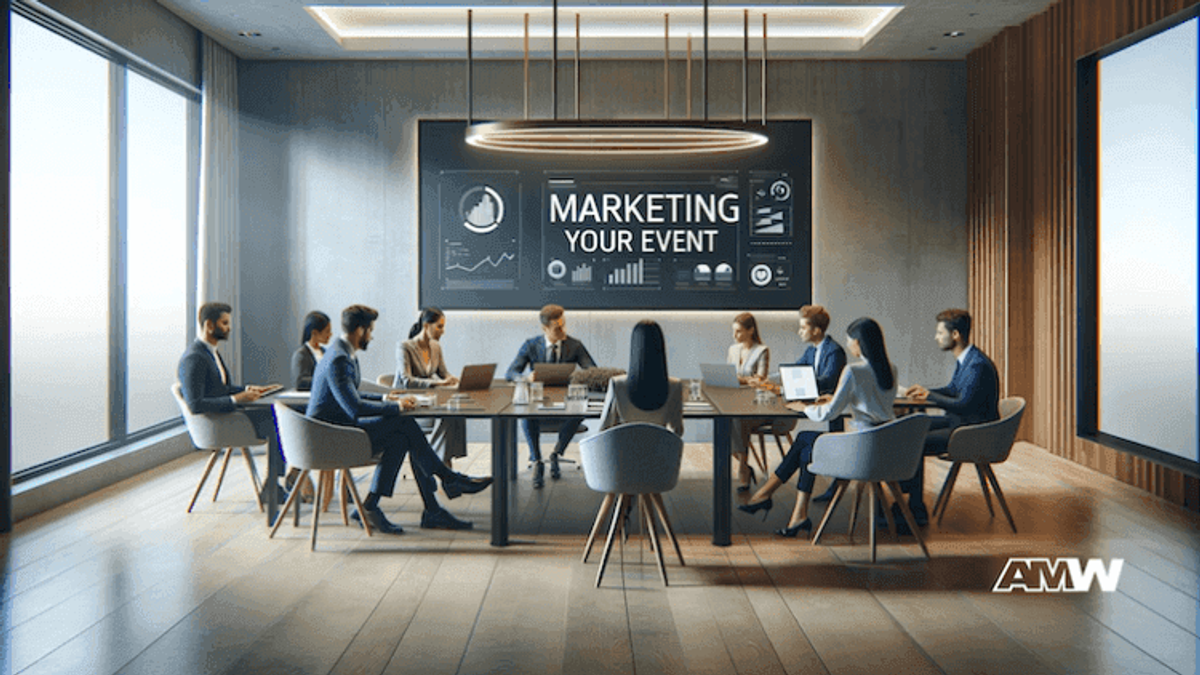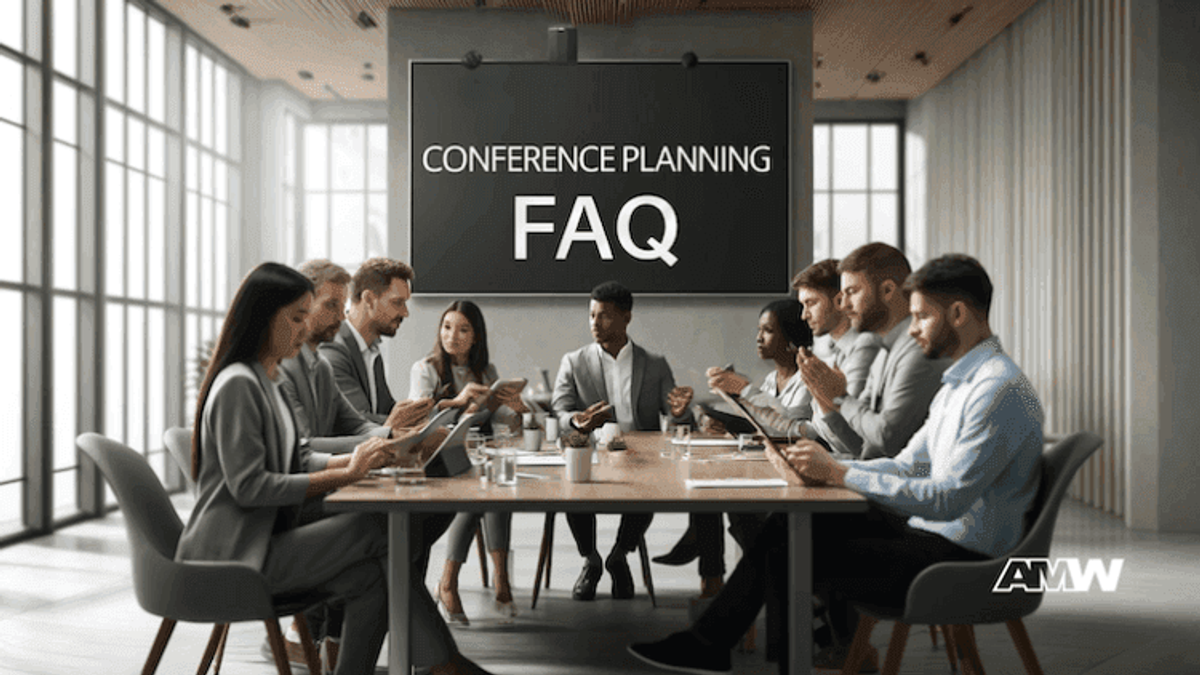Conference Planning Essentials: From Logistics to Content

Imagine yourself standing in the heart of a bustling conference hall. Picture the scene: lights dimming over a sea of eager faces, the murmur of excited conversations filling the air as industry professionals from around the world gather, bringing with them ideas and expectations as diverse as their backgrounds. The panels are perfectly aligned, each speaker meticulously prepared, and every detail from the ambient lighting to the precise layout of seating charts has been finely tuned. This isn't just another event; it's the pinnacle of months of dedication, a beautifully orchestrated symphony of logistics and content.
Quick Summary
In the vibrant landscape of conference planning, meticulous attention to logistics and content is essential for creating an impactful experience. By understanding your audience and leveraging technology, you can transform attendees into active participants. An effective marketing strategy amplifies your event's reach, while seamless on-site execution ensures everything runs smoothly. Ultimately, the true reward lies in the meaningful connections forged and the inspiration gained, as each confere
As you stand there, the air vibrates with anticipation and the palpable success of what's to come. This scenario, a blend of countless carefully managed elements, sets the stage for an unforgettable experience. It's a testament to the power of thorough planning and passionate execution.
Today, I invite you to delve into the vibrant world of conference planning with me. Drawing from a rich reservoir of expertise and peppered with examples, this guide is crafted to arm you with the knowledge and skills needed to orchestrate your successful conference.
Imagine the pride and confidence you'll feel as you navigate this journey. Whether it's your first time planning a conference or looking to refine your skills with the latest trends and techniques, the path ahead is promising. With every decision and detail, you'll move closer to transforming a simple gathering into a landmark event that resonates with every attendee.
Let's start at the beginning, the foundation of any successful conference: understanding your audience. It's crucial to step back and reflect on who will be walking through those conference doors. Are they industry leaders, creative thinkers, technical wizards, or a dynamic mix of all three?
Grasping the interests and expectations of your attendees isn't just part of the planning process; it's the cornerstone that influences every element of your conference, from the overarching theme to the selection of speakers and crafting a marketing strategy that resonates. For instance, why not dial up the excitement by integrating the latest virtual reality technology if you're orchestrating a tech conference? This could captivate your tech-savvy attendees and set your event apart as a forward-thinking, innovative gathering.
This is your moment to shine as a conference planner. With each step, from conceptualization to execution, you can create something extraordinary. Let's embark on this journey together, transforming anticipation into achievement.
Step 2: Nail Down the Logistics

Navigating the logistics of a conference is much like conducting an orchestra; every section must be in tune and the timing impeccable to ensure the performance captivates the audience. The logistics are undeniably the backbone of your event, encompassing critical elements like venue selection, registration management, connectivity, catering, and security. Each component must function and unite to create a seamless experience for every participant.
Choosing the right venue, for instance, goes beyond mere capacity. It's about pinpointing a space that embodies accessibility, provides the necessary amenities, and is equipped with the latest technology. Imagine the difference it makes when attendees can move smoothly from one session to another, connect effortlessly to Wi-Fi, and find comfortable spots to network or relax.
This meticulous attention to logistical detail transforms a good conference into a great one. It's about anticipating the needs of your participants and preemptively solving problems before they arise. Whether ensuring that registration desks are efficiently managed to avoid long queues or coordinating with caterers to provide various high-quality food options that cater to all dietary needs, each aspect of logistics requires a proactive approach.
By mastering the logistics, you set the stage for success, creating an environment where attendees can focus entirely on the insightful content and networking opportunities you provide rather than getting bogged down by organizational hiccups. This level of detail-oriented planning elevates your event and ensures that participants leave with a strong impression of a well-crafted, professionally executed conference.
Step 3: Curate Compelling Content

The essence of any successful conference lies in its content. It's the core around which all other aspects revolve, the main draw that pulls attendees from across the globe. Content in the world of conferences isn't just about filling slots in the agenda; it's about curating a relevant and riveting program, pushing boundaries, and sparking conversations long after the last session closes.
Imagine crafting an agenda where each topic is a thread in a larger tapestry designed to inform and inspire. This is where you bring in speakers who do more than deliver a presentation; they engage, challenge, and connect with the audience. They are storytellers of their crafts, beacons of knowledge in their fields, and charismatic figures who can transform a lecture into a dialogue and a learning opportunity into an experience.
Consider the impact of introducing a surprise guest speaker at your conference, much like what happened at a recent digital marketing conference. When a well-known figure from a popular social media platform took the stage unannounced, the session filled up quickly and became the talk of the event, sparking discussions and social media buzz. Strategic content planning can significantly elevate the attendee experience, making each session educational and memorable.
Selecting the right mix of topics and speakers is akin to curating an art exhibit where every piece contributes to a greater narrative. You want your attendees to walk away not just with notes but with ideas and inspiration that can have a tangible impact on their professional lives. This approach to content is what makes a conference not just successful but influential. By focusing on quality, relevance, and speaker engagement, you ensure that your conference content captivates and educates, setting a standard for excellence and innovation in your industry.
Step 4: Engage Through Technology

In today, leveraging technology is not just an option—it's essential for enhancing the conference experience in ways that resonate with a tech-savvy audience. The true power of technology is its ability to make every attendee's journey seamless and interactive, transforming passive listeners into active participants.
Consider the role of mobile apps, which have become indispensable tools in conferences. These apps do more than just relay information; they act as your conference assistant, guiding you through the maze of sessions, helping you connect with fellow attendees, and ensuring you get all the parts of the conference that align with your interests. They can house everything from detailed schedules and maps to speaker bios and session materials, all accessible with a simple tap on your smartphone.
Imagine entering a conference as an attendee and participating in a dynamic, interconnected community. This is the promise of technology in conference settings.
By integrating such technological tools, you streamline the logistical aspects of conference management and significantly enhance the attendee experience. Participants are no longer merely audience members; they become integral parts of a larger conversation, empowered to build their networks, share their thoughts, and engage with content on a deeper level. In this way, technology doesn't just support the conference—it transforms it, creating a dynamic environment that is more inclusive, interactive, and impactful.
Step 5: Marketing Your Event

Marketing your event is the cornerstone of drawing the right attendees and ensuring your conference is noticed and remembered. It's about crafting a narrative that resonates, using a blend of tried-and-true methods and innovative digital strategies that capture the essence of what your event promises to deliver.
Begin with the basics: email campaigns. These are announcements and invitations to engage with your event's unique value proposition. A well-crafted email can build anticipation, highlight key speakers, and showcase the benefits of attending. It's about creating a personal touch, a sense of excitement that makes potential attendees mark their calendars.
But don't stop there. Embrace the power of digital marketing to broaden your reach. Targeted ads on social media platforms allow you to pinpoint exactly the type of professionals who would benefit most from your conference. For instance, when organizers of the "Eco-Sustainable Building Conference" launched their campaign, they focused on showcasing innovative keynote speeches about sustainable materials. Targeting professionals in the green building sector attracted attendees who were directly interested in the content and those who were likely to become ambassadors, spreading the word within their networks.
Content marketing also plays a pivotal role. By publishing blogs and articles that delve into your conference's themes, you establish authority and stoke curiosity and intellectual engagement before the event begins. This content, rich in keywords and insights, enhances your visibility online and positions your conference as a thought leader in the field.
Each marketing channel you choose should echo the core message of your conference, creating a cohesive and compelling invitation to an event that promises to inform and inspire. The goal is to create a marketing ecosystem that reaches potential attendees at multiple touchpoints, ensuring that when they decide to invest their time and resources, it's in an event they believe will offer them significant value. Your marketing efforts should illuminate the path to this decision, making it an easy and enthusiastic yes.
Step 6: Seamless On-Site Execution

The day of the conference is when all your planning and preparation come to life. It's a day filled with potential, poised to unfold as a testament to your hard work and meticulous attention to detail. To ensure everything runs smoothly, your team must be finely tuned to the day's rhythm, with each member clear on their roles and responsibilities.
Having a well-coordinated event staff is like having a skilled orchestra at your disposal. Each member knows their part by heart and is ready to deliver a performance that resonates with efficiency and professionalism. Ensure that everyone from the technical team to the customer service staff understands their tasks and their impact on the attendees' overall experience.
Clear signage throughout the venue is not just a marker; it's a guide that fosters a sense of ease and confidence among attendees. It directs them effortlessly from one session to the next, aiding in the seamless flow of events and eliminating confusion or frustration.
Moreover, a dedicated help desk is a beacon of support, providing a go-to spot for any inquiries or issues attendees might face. This level of thoughtful organization can elevate the attendee's experience, making them feel valued and well cared for throughout the event.
Preparation for unforeseen circumstances is equally critical. Have contingency plans for any unexpected issues that may arise.
In essence, seamless on-site execution is about creating an environment where logistics are so smoothly handled that attendees can immerse themselves fully in the content and networking opportunities your conference offers. It's about ensuring that each participant leaves with a positive impression, propelled by the smooth orchestration of every detail from start to finish. When you achieve this, you meet and exceed expectations, setting a standard for excellence in conference planning.
Conclusion: The Reward of a Well-Planned Conference

The art of conference planning is akin to conducting a grand orchestra, where every note must harmonize perfectly to deliver a sublime performance. As a conference organizer, you hold the baton, guiding the myriad details that orchestrate an event that's not just a meeting but a milestone. By meticulously aligning logistics with compelling content, you create more than just an event; you craft an experience.
The true reward of a well-planned conference lies in the moments of connection and inspiration that your attendees take with them long after the closing remarks. It's about exchanging ideas that spark innovations, the conversations that forge professional relationships, and the shared experiences that bind communities. This is where the magic happens: in the seamless blend of education, networking, and engagement that enriches minds and invigorates industries.
With every detail—from the strategic selection of the venue to the integration of cutting-edge technology—you set the stage for these transformative experiences. Your focus on creating a responsive, engaging, and well-equipped environment ensures that your conference not only meets but exceeds the expectations of its participants, leaving them both enriched and eager for the next gathering.
Successful conference planning isn't just about logistical precision and rich content; it's about creating an atmosphere that inspires and connects. Each conference is a journey; with the right preparation, you can make every trip memorable. Turning every gathering into a celebration of knowledge and community affirms your role as an organizer and a catalyst for innovation and growth.
In this dynamic dance of planning and execution, your role is pivotal. Each decision, each detail, and each moment is a brushstroke in the bigger picture of your event's success. Embrace this responsibility with passion and pride, and watch as your well-planned conference unfolds into an enriching experience that attendees will remember and value long into the future.
FAQ about Conference Planning

What is the best way to choose a venue for a conference?
Selecting the right venue is critical and should be based on several factors, including the size of your audience, the type of activities you plan to host, accessibility (including public transport and parking), accommodation options for out-of-town attendees, and technological capabilities. Always visit potential venues in person and ensure they align with the overall experience you want to deliver.
How early should I start planning a conference?
It is recommended to begin planning for larger conferences at least 12 months in advance. This timeframe allows you to secure the best venues and keynote speakers, who often have their schedules filled far ahead. Early planning also provides ample marketing and participant registration time, ensuring a broader reach and better turnout.
How do I ensure high-quality content for the conference?
To ensure high-quality content:
- Start by identifying current and relevant topics within your industry.
- Engage experts and thought leaders as speakers and carefully vet their presentations to align with your conference's objectives.
- Consider including diverse formats such as workshops, panel discussions, and interactive sessions.
What are some practical ways to market a conference?
Effective marketing strategies include digital marketing (SEO, email marketing, social media campaigns, paid ads) and traditional methods (print ads, sponsorships, radio spots). Personalized marketing, such as segmented email campaigns, can be highly effective by targeting your audience members based on their interests and past attendance.
How can technology enhance the conference experience?
Technology can greatly enhance the conference experience by streamlining registration processes, facilitating networking through mobile apps, and improving engagement through interactive tools like live polling and Q&A sessions. Additionally, consider leveraging virtual or augmented reality to create immersive experiences or hybrid models allowing physical and virtual attendance.
What should be included in a contingency plan for a conference?
A robust contingency plan should include strategies for dealing with technical issues, medical emergencies, unexpected changes in attendance, speaker cancellations, and extreme weather conditions. It's crucial to have backup vendors and speakers and plans for power outages or IT failures to ensure the conference can proceed smoothly.
How can I measure the success of my conference?
Success can be measured through attendance rates, participant feedback, social media engagement, and post-event surveys. Analyzing the quality of networking and business opportunities generated during the event is also a good indicator of success. Additionally, financial metrics like return on investment and profit margins can provide insight into the economic impact of your conference.

AMW is a founder & ceo at AMW.